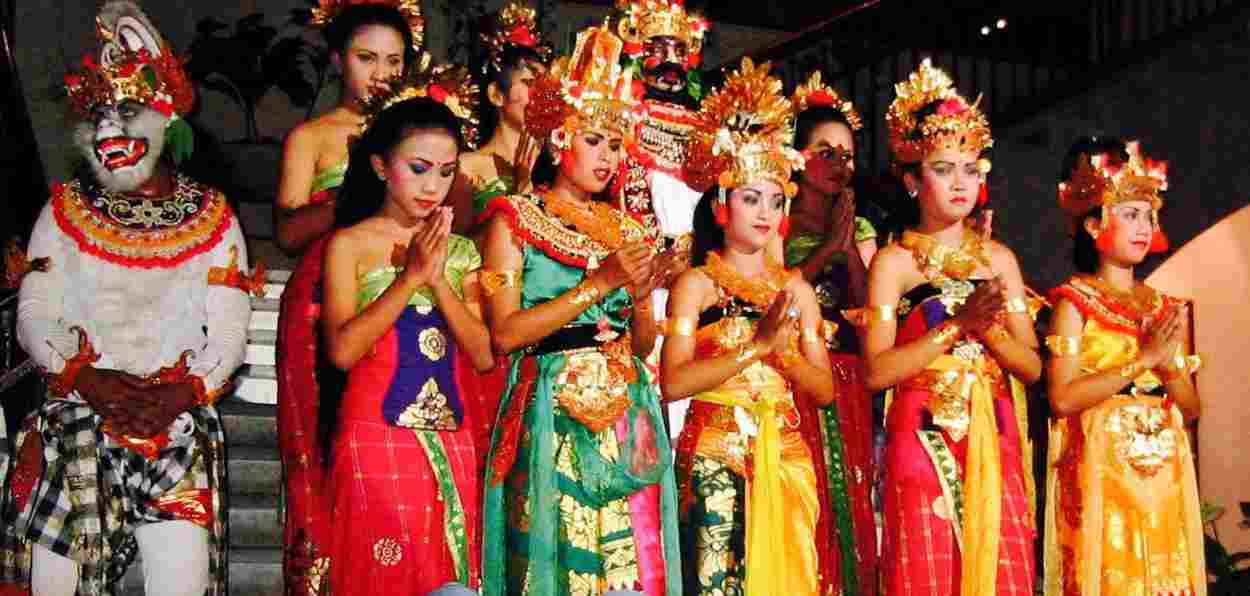
Malick Asghar Hashmi
Indonesia is the country with most Muslims in the world and yet Lord Ram and the epic of Ramayana depicting the story of a devoted son, a great ruler, and an ideal man (maryadapurush) are in the center of the island nation’s cultural and social milieu.
The footprints of Sanatan Dharma or Hinduism can be seen in the lifestyle of the common people, the public space, and the government’s icons in Indonesia. In addition to theater plays, books, stories, and artifacts depicting the Ramayana, Indonesia has released several Ramayana post stamps on Rama, Sita, and Hanuman to date.
For many Indonesians, the story of the Ramayana is part of their culture; it transcends religion and ethnicity. The Indonesians have not only romanticized the idea of Ramayana, but they have also imbibed it as a philosophy of life. For the average Indonesian, Ram and Sita are not just heroes, but torchbearers of good values, who bring relevance in modern life.
Former President of the United States Barack Obama once said that India held a special place in his imagination and the reason cited was that he was often told the story of the Ramayana and the Mahabharata while living in Indonesia.
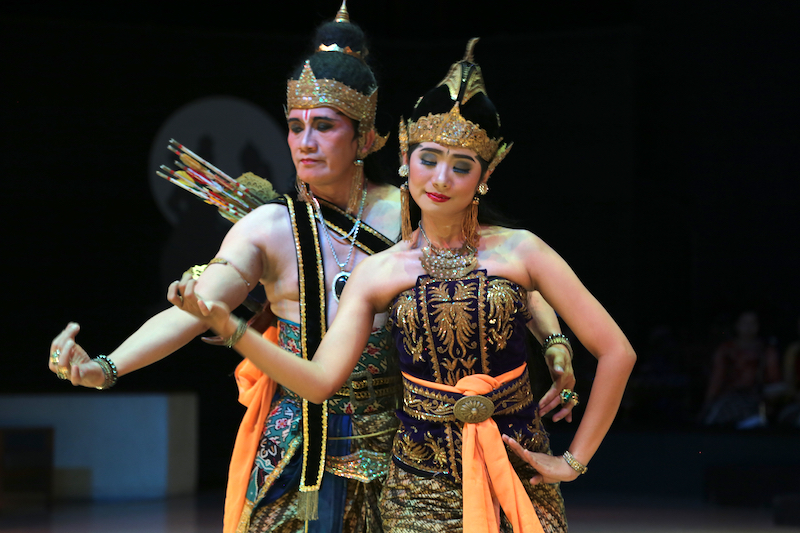
Ram and Sita on the Stage
In this Muslim country, the older generation makes sure to introduce the younger ones to Ramayana and its characters like Ram, Sita, Hanuman, and Laxman, etc. before they get hooked on to the western imaginary superheroes like Spiderman or Batman. The younger generation of Indonesians are now learning that they too are part of the rich and ancient Hindu culture that gave them the Ramayana and the Mahabharata.
History has it that Hinduism came here in the first century through traders, sailors, scholars, and priests. It soon became integrated into Javanese traditions here.
Here Hinduism also adopted Buddhism, which reached Sumatra in the sixth century and completely merged into the Indonesian version. However, with the decline of the Srivijaya and Majapahit empires, Hinduism in Indonesia gradually weakened. Despite this, even today Indonesian culture has not been able to separate itself from Ramayana and Ram.
The epic Ramayana is believed to have come to Indonesia around the 8th or 9th century. Written in the old Javanese language, it became known as Kakwin Ramayana. It was used to revive Hinduism at a time when Buddhism was well established in Sumatra, West and Central Java through shadow puppetry.
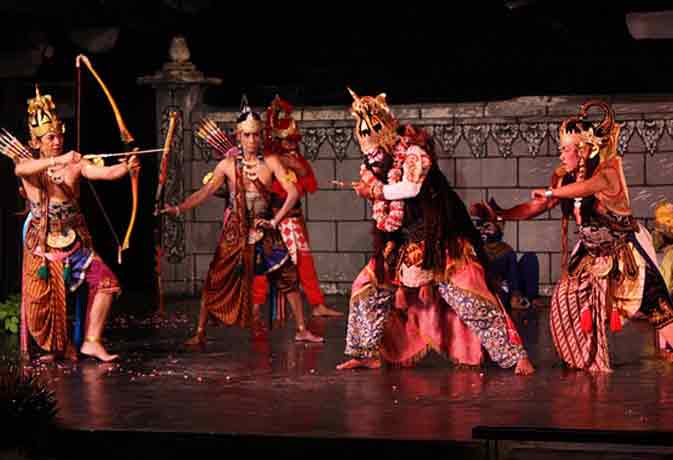 A scene from Ramayana as the story is depicted on the stage in Indonesia
A scene from Ramayana as the story is depicted on the stage in Indonesia
Stories from the Mahabharata date back to the 1st century in some Indonesian islands, with versions almost matching the Indian version. The Kakawin Ramayana is believed to have been written in the Old Javanese language during the Medang Empire (732–1006 AD) in Central Java. Another Indonesian version of the Ramayana is the Balinese Ramkawaka. This is the developed version of Kakvin Ramayana.
The Kakawin regard the Ramayana as the pinnacle of artistic expression, derived from a series of Javanese Sanskrit-based metrical patterns. It is the longest of all the Old Javanese texts. The large number of preserved palm leaf manuscripts from Java and Bali attest to its popularity and adaptation.
The Kakwin Ramayana differs from the original Indian version in some ways. According to many literary scholars, the source of the Old Javanese Kakwin Ramayana was probably the Sanskrit poem Bhattikavya, written by the Indian poet Bhatti around the 7th century AD. The first part of the Kakwin Ramayana is almost identical to Bhattikavya's rendition.
Indian scholars believe that the latter is almost untraceable from the original. Although the characters of Ram, Sita, Lakshman, Hanuman, Ravana, etc. remain fundamental to its story. The Kakawin Ramayana also features several Javanese indigenous deities such as Dhayana and his four sons were called Punokawan or clown servants. However, these characters are the most popular and feature prominently in all Weiyang performances.
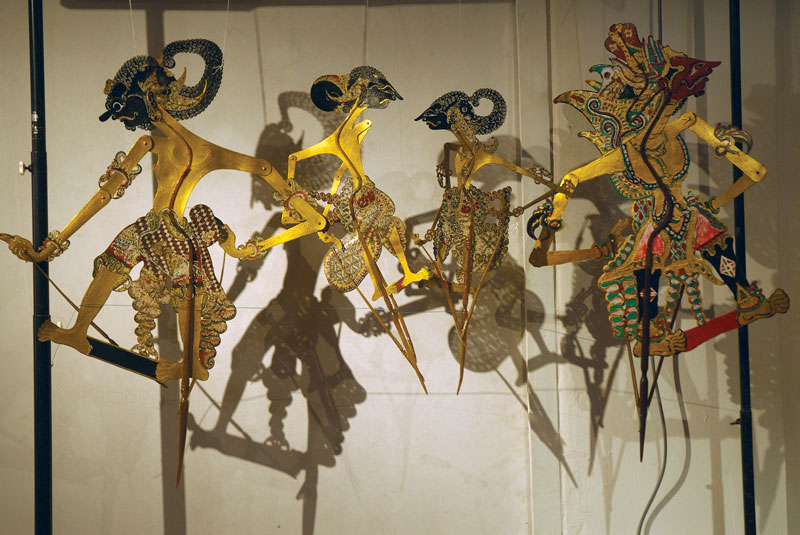 Ramayana-based Puppet show
Ramayana-based Puppet show
In this Sita, the wife of Ram is depicted, differently. While in the Indian Ramayana, she is portrayed as a gentle, beautiful, demure, loyal, and patient woman, in the Kakavin Ramayana she is portrayed as a courageous, and strong woman who fights demons in Ravana's Lanka instead of waiting for Ram to rescue him.
The character of Sita in Indonesian Wayang is shown with her chin and head in a defiant position. The only time she becomes weak is when she sees Marich, the golden deer, whom she sends Ram to fetch for her. Rama is shown to be slightly imperfect, he is incredulous.
Hanuman is a revered character in Indonesia. He appears in many historical dance and drama artifacts such as the Wayang Wong found in Javanese culture and in the Odalan ceremony and other festivals in Bali. In many medieval Hindu temples, archaeological sites, and manuscripts discovered in Indonesia, Hanuman is prominently depicted along with Rama, Sita, Lakshmana, Vishwamitra, and Sugriva.
The Ramayana is such an inherent aspect of Indonesian culture, especially among the Javanese, Balinese, and Sundanese peoples, that it represents an aesthetic expression along with moral and spiritual guidance. Especially through Wayang and traditional dances.
Ramayana-based Wayang puppetry has also ensured that the epics of Ramayana and Mahabharata have become embedded in the cultural matrix of Indonesia. Indonesia's major puppet theaters – the Sundanese wayang golek and the Javanese and Balinese wayang kulit - derive much of their repertoire from the indigenous rites of the Ramayana and the Mahabharata.
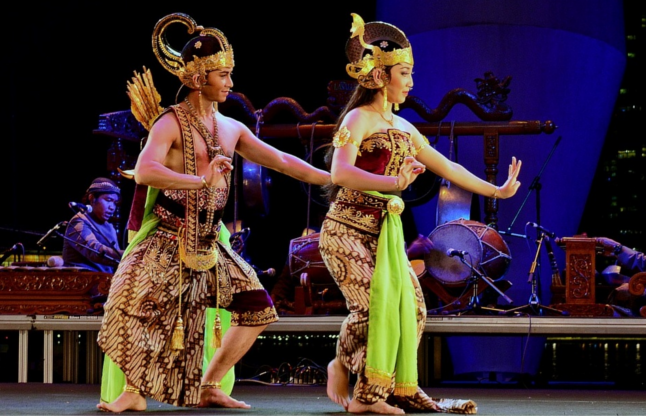 A scene from the play Ramayana in Indonesia
A scene from the play Ramayana in Indonesia
It also provides source material for the wayang wong (human theatre) of Java and Bali. However, most Javanese are Muslims. Still, it survives as an art form among them and is a great source of entertainment.
The Balinese cake dance depicts the Ramayana saga, with dancers playing the roles of Rama, Sita, Lakshmana, Jatayu, Hanuman, Ravana, and other characters. The display also features a fire show depicting the burning of Lanka by Hanuman.
Similarly, in Yogyakarta, the Wayang Wong Javanese dance re-enacts the Ramayana through the famous Ramayana ballet, which is performed on the Trimurti Prambanan open-air stage with the famous Prambanan Temple as the backdrop.
ALSO READ: Kolkata: City is Joy is also the melting pot of cultures, home to various ethnic communities
Bali is a perfect example of the living story of Ramayana in Indonesia. In every nook, corner, and intersection of Bali city of this Muslim-majority country, you can see ornate and exquisite statues of Arjun, Ram, Hanuman, Sita, Shiva, Jatayu, Vishnu, etc. with bows.
